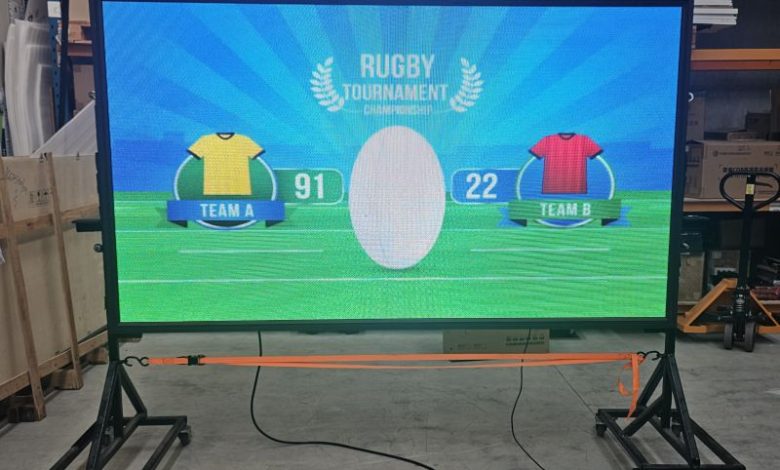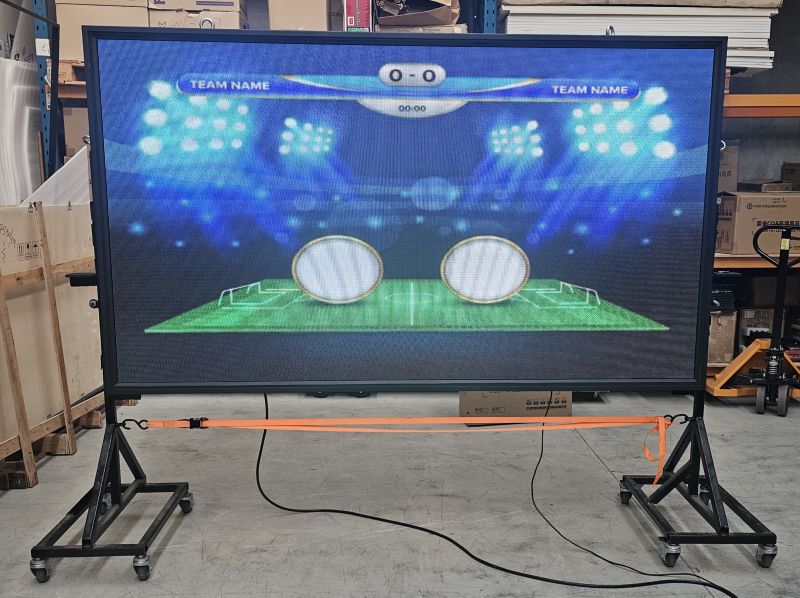Keeping score, digitally
Digital scoreboards can keep the crowd excited and players motivated during sports matches, and can also be used during class time.

If you’re watching a sporting game and can’t keep track of the score, you’re likely to lose interest quickly.
This means scoreboards are an essential element in school gyms, sporting fields and courts. And while most schools have some form of visual scoring system at their sporting facilities, it may be worth considering if your system needs an upgrade. There have been significant advances in digital scoreboard technology in recent years, with improved functionality, flexibility, and ease of operation.
Read the latest print edition of School News online HERE.
Digital scoreboards help to keep spectators engaged and the crowd cheering. They provide valuable information to players, helping them to keep track of the score, time left in the game, and other key statistics relevant to their sport.
A digital scoreboard will elevate your school facility to a professional standard, making it an attractive venue for school and community sport.
Ready set go: Scoreboard set-up
Size, design, functionality and a range of other specifications are customisable for school scoreboards. Fixed digit, sport-specific systems may be the best option when only one sport is to be played in an area, for example a cricket scoreboard that keeps track of runs, wickets, and innings for a cricket field. Similarly, a basketball scoreboard can display the game score as well as a shot clock and the time left in the game.
For these scoreboards, only a few elements can be changed, for example the score and team names, while the rest of the display remains fixed. This does limit the functionality of these scoreboards, but means they are very easy to operate.
A full matrix system is best suited to areas where muti-functionality across a range of sports is required. These displays are similar to digital school signage or advertising displays, with the entire screen operating as one panel, like a giant TV screen. Using software, the display can be customised to support any sport. Adding team names and logos alongside the score, as well as countdowns, live-action replays and other features is simple with this type of scoreboard.
Matrix systems offer extra flexibility, with the ability to be used to display advertising or sponsorship details, messages of support for your team or other school communication when not being used as a scoreboard. The scoreboard can then become a useful asset during PE lessons, school sports days and athletics carnivals, or during school assemblies or other activities to display messages, photos and videos.

WiPath Managing Director and Chief Engineer, Walid Hadi outlined a range of technological advancements in electronic scoreboards. “Real-time data can provide up-to-the-minute scores, player stats and game analytics. Interactive content like social media feeds and adverts can also be incorporated to engage spectators, and other multimedia elements such as sound systems can be integrated to enhance the game-day experience.
“The multi-sport functionality of electronic scoreboards makes them a cost-effective solution for facilities hosting various athletic events. Over time, electronic scoreboards can be more economical due to their durability and the reduced need for physical replacements compared to traditional scorecards.”
To fit within budget, some schools opt to upgrade old static, manually operated scoreboards with digital components. This may be as simple as adding an LED display to show the game score.
Let’s play: Making the scoreboard yours
Whether you choose a fixed digit or matrix system, many elements of the scoreboard can be adapted to suit your school. School colours, mottos, values and team names can be incorporated into the design of the scoreboard. Seeing their team colours or mascot on the scoreboard may give your team the extra boost it needs during a game.
The size of the scoreboard can also be tailored to your specific needs, and you can choose to have your scoreboard on a stand or mounted to a wall. Portable scoreboards which can be moved around the school as needed or used offsite add extra flexibility. Other optional features include control method, indoor or outdoor use and power requirements.
The power source of the scoreboard can be customised in some situations. Often, units can be solar powered, easing the burden on the environment and on the school for operating costs.
Both cabled and wireless scoreboard options are available to schools. Mr Hadi said there are pros and cons to both. “Cabled scoreboards are stable and secure and offer a reliable connection. They are not susceptible to interference from other wireless devices, and their durability can make them more cost-effective in the long term.
“Installation, though, can be more complex with extensive work needed to safely run cables from source to destination. Cabled scoreboards also limit flexibility in terms of portability,” Mr Hadi said.
On the other hand, wireless scoreboards offer greater flexibility and portability, with no need for extensive cabling. “Wireless scoreboards, though, are susceptible to interference from other wireless devices, and can be costly if livestreaming is needed due to advanced technology. Performance can be hampered by battery life or wireless signal strength, and they are less secure than cabled models and can be unstable.”
With the summer holidays approaching, this may be the perfect time to upgrade your school scoreboard.
It’s important to remember that digital scoreboards are IT equipment, and like all IT equipment in your school, may need servicing from time to time. Establish a strong relationship with your scoreboard supplier so that any issues can be dealt with quickly, and keep your students in the game.
This article was originally published in the Term 4 edition of School News. Read it online HERE









